
Thanks to our Cantonese roots, my dad made lots of Hong Kong-style wonton soup while we were growing up. His wontons are characterized by the addition of finely chopped, almost ground, shrimp in the filling, and sometimes, he even uses crabmeat for an extra-rich flavor. He also cooks the wontons and noodles separately, never in the broth they’re served with, so that the starch from the wontons or noodles won’t thicken and contaminate the broth.
For as long as I can remember, my dad’s soup for wonton has consisted mainly of chicken broth or a combination of chicken and pork broth. He might add some extra seasonings, but these were fairly normal pantry staples. This all changed one night as we sat in the kitchen of a family friend’s home.
As we started eating the noodles that our friend had prepared for us, my dad slowly contemplated the strangely familiar taste. He realized suddenly that the noodles reminded him of the wonton soup back in Saigon. He learned that it was made with the same type of dried flounder that’s used to flavor wonton soup back in his hometown. After some research, I’ve discovered that dried flounder is also one of the key ingredients in the wonton soup served at the famous wonton restaurant in Hong Kong, Mak’s Noodle.
Since the rediscovery of dried flounder to flavor soup, my dad has taken it upon himself to turn his wonton soup up a notch. So, without further ado, here is my dad’s current recipe for authentic, Hong Kong-style wonton soup.
Wontons
Serves 4
You can substitute shrimp with crabmeat in this recipe, though in that case, I’ve found that 1/4 lb of crabmeat works better than 1/2 lb, because the crab taste can overwhelm the traditional pork flavor of the wonton.
1/2 lb shrimp
1 lb ground pork
1 tsp pepper
1 1/2 tsp garlic powder
1 1/2 tsp salt
2 tsp sesame oil
2 tsp cooking oil
2 tsp corn starch
1 egg
1/2 tsp dried flounder powder, see recipe below (you can also substitute fish bouillon powder or anchovy powder as well, but the taste will not be quite the same)
1 package of wonton wrappers
handful of chopped scallions and/or cilantro
a few drops of sesame oil
1. If using fresh whole shrimp, peel and devein. Finely chop the shrimp.
2. Combine the ground pork and chopped shrimp together with the other dry ingredients. Add in the oils and egg.
3. Completely mix the ingredients together, but be careful not to over-mix (over-mixing makes the meat tougher).
4. Using a spoon, scoop out a dollop (about a generous teaspoonful) of the meat mixture onto a wonton wrapper. Fold two of the opposite corners together and pinch the top. Be careful not to press the other corners close yet. There should be air in the middle, so it looks almost like a loose cannoli.
5. Next, take the two side corners and gather them up to meet the top. Press on the part just above the meat, so that there is a nice flat, overlapping layer of wonton skin sealing the meat pocket. Do not twist and squeeze like you would a candy wrapper around a hard candy, however. The seal should be flat, not twisted. It should look a bit like a lionhead goldfish, with a flowing tail. Depending on your preference, there are also various other ways that you can fold your wontons. My sister likes to use my dad’s mysterious method of spontaneously scrunching up the entire bundle.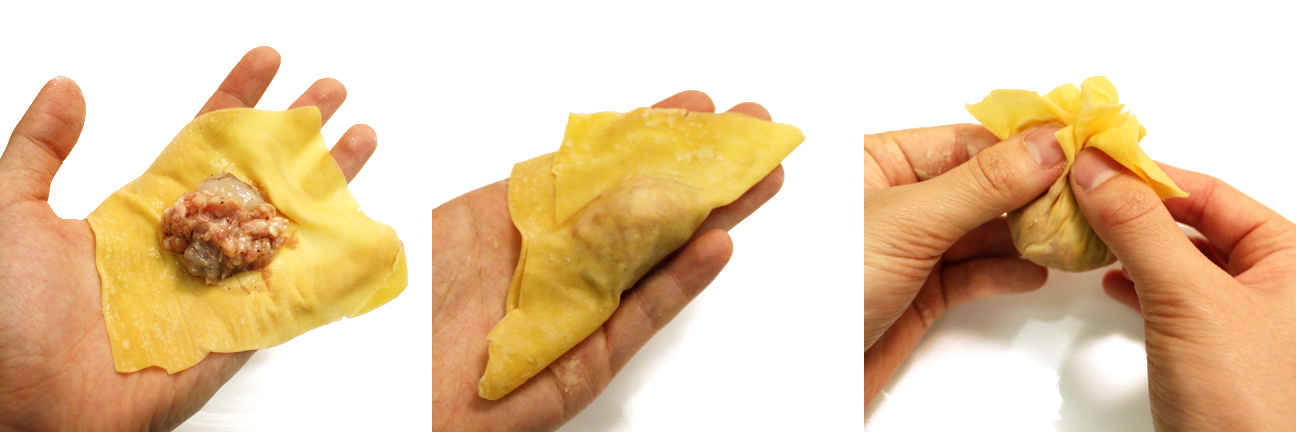
6. Place finished wontons on a lightly floured plate or tray. Be sure to do this step or else all your hard work will go to waste as you peel your sticky wontons off the plate and tear holes in the wrappers. (I speak from experience :\) At this point, you can also freeze your wontons for future use. Place them in a single layer first on a tray, with a little space between each wonton, so that they don’t stick together. After they freeze on the tray, you can pack them together into a bag for storage.
7. Bring a 3-qt. pot of water to a boil (use more water if you’re planning to cook noodles as well). The flour from the wontons adds excess starch and unnecessarily thickens the cooking liquid, so you don’t want to contaminate your beautiful broth by cooking either wontons or noodles in it.
8. As the water starts boiling, drop in your wontons, about 8-10 at a time. When the wontons float to the top of the water, they should be done. This takes about 5-8 minutes.
9. When wontons are done, put them in a bowl and generously ladle soup over the wontons. Sprinkle with scallions and cilantro. Finish with a dash of sesame oil.
Dried Flounder Powder
You can find dried flounder at most Chinese supermarkets. They may also be labeled with the names “Stock Fish” or “Rough Scaled Flounder.” This can be made in advance and stored for several months at a time. For a quick pick-me-up for bland soups and dishes, add in a sprinkle of flounder powder!
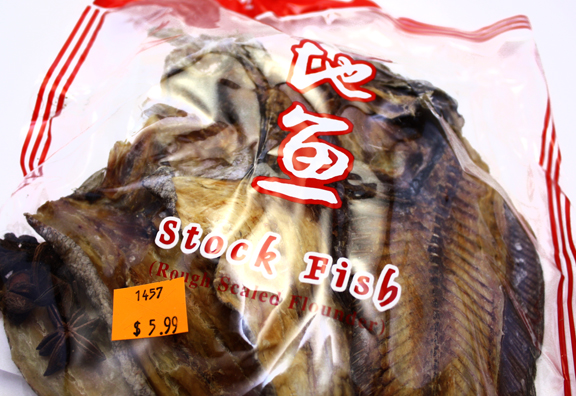

1. Deep-fry pieces of dried flounder in oil. Fry until crispy, but do not burn.
2. Let the pieces of fish dry on paper towels, allowing the paper towels to soak up excess oil.
3. Using a blender, food processor, or mortar and pestle, grind up the dried flounder until it becomes a fine powder.
4. Store in an air-tight jar for up to 3 months.
Soup
There are several different ways to make the soup for wontons, depending on the amount of time and effort that you’d like to put into the soup. I’ll start with the simplest and end with the most complex.
1. Water + wonton soup base
At your local Chinese supermarket, you should be able to find instant wonton soup base. I like to use the Knorr brand wonton broth mix. This works great if you’re in a rush and don’t have the time to make your own broth. The flavor is decent, and you can easily spruce it up with a dash of pepper and fish sauce.
2. Chicken broth + dried flounder powder
If you have chicken broth on hand (maybe after poaching chicken), simmer up some of that broth for the wonton soup. Add in 1-2 tsp. of dried flounder powder (or fish bouillon or anchovy powder), and you’re all set! Again, a dash of pepper or fish sauce may help enhance flavors. This is my usual go-to method for making wonton soup.
3. Chicken bones + pork bones + dried flounder + dried shrimp
If you’re feeling like impressing your in-laws or dinner guests, try this version of soup. Dry-roast the dried flounder at 300 degrees for about 10 minutes. Meanwhile, parboil the chicken and pork bones. After bones have been washed, combine 1 lb. of chicken bones, 1 lb. of pork bones, and 1 piece of dried flounder about the size of the palm of your hand with 3 quarts of water. You can add a few slices of ginger if you wish. Simmer for at least 2-3 hrs. During the last 30 minutes of simmering, add a small handful of dried shrimp. Add salt to taste. Before you serve the soup, strain the soup to get rid of the bones, fish, shrimp, and ginger. Serve hot!
Noodles
You can certainly have a bowl of wonton soup as a starter or as a meal of its own, but it’s tasty served with noodles as well. Fresh thin yellow egg noodles are best, but if not available, dried thin yellow egg noodles will work too. Similar to cooking the wontons, boil a separate pot of water to cook the noodles, so as not to thicken your wonton broth with any excess starch. (If you boil an extra-large pot of water, 5-6 quarts, you can probably cook both the wontons and the noodles — one after the other, not together –Â using the same pot before the water turns too thick and goopy, in which case you should start a new pot of water.) Cook the fresh noodles for about 3-5 minutes, until al dente. Unlike pasta, where you never rinse the noodles, so that the extra starch helps the sauce cling better, in this case rinsing the noodles actually helps. My dad always runs egg noodles under ice-cold water to give them an even firmer bite and to wash off excess starch. When serving, place the noodles in the bowl first, add 6-8 wontons on top, ladle soup over until it covers both noodles and wontons, and garnish with chopped scallions, cilantro, and a few drops of sesame oil. You can also add some boiled greens, such as bok choy, to the bowl if you like. The greens can be boiled in the broth itself to give the soup a bit more flavor.
Dipping Sauce
Though this is entirely unnecessary because the wontons are quite flavorful eaten plain with soup, I grew up eating my wontons with a dipping sauce. Here’s a basic recipe for the sauce.
2 Tbsp soy sauce
2 Tbsp Chinese red vinegar
1 Tbsp oyster sauce
Mix everything together well. Enjoy!

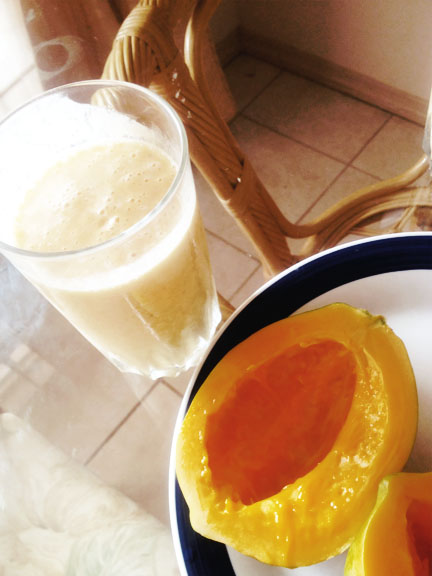





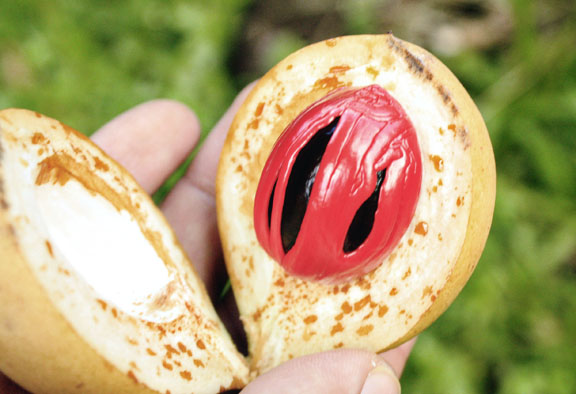


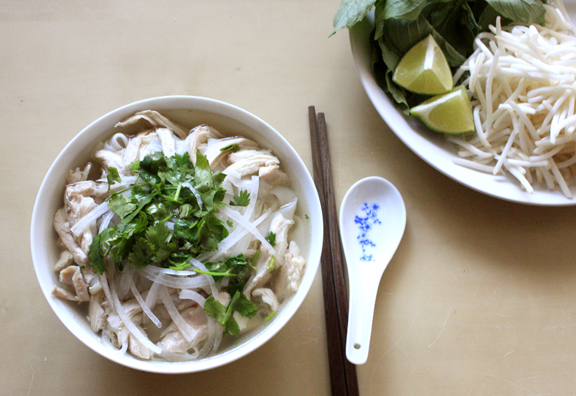
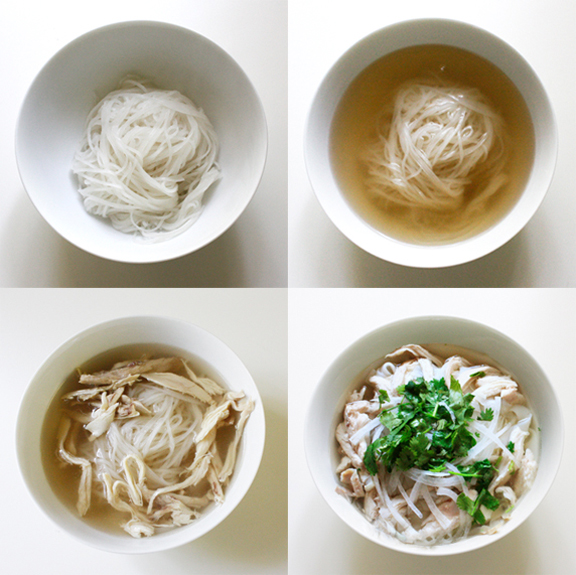

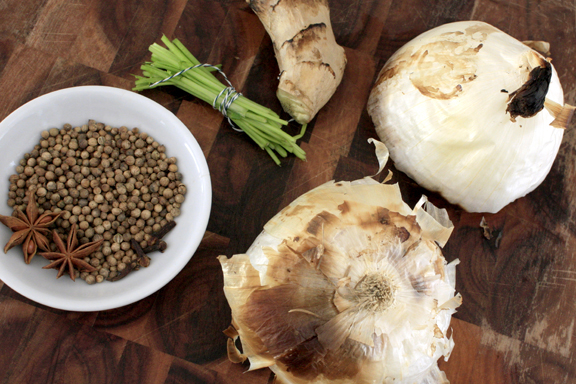






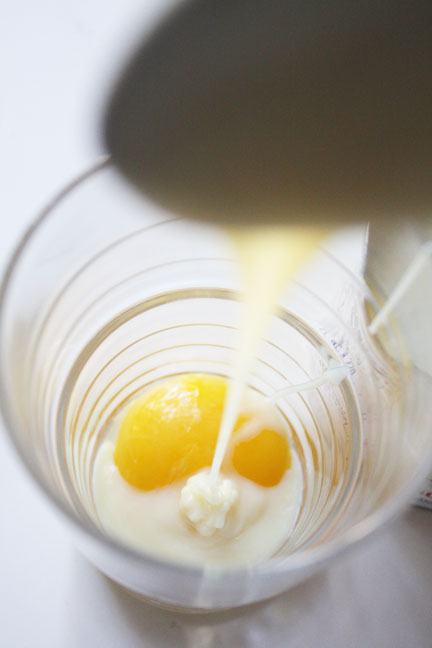
















Connect with us